View current page
...more recent posts
One of the umpteen million lies told by the current lyin'-its-head-off US Administration was calling 9/11 a failure of imagination. Man, didn't these people ever watch movies? Executive Decision, a pretty excellent if technically overambitious actioner from 1996, features a band of Muslim hijackers (with submachine guns!) who take over a crowded jet ostensibly to free their jailed Osama-like leader. A bomb is on board containing "enough nerve agent to wipe out half the Eastern seaboard," and the real mission of the cell's Mohammed Atta-like second in command is to crash the plane into the heart of Washington DC and bring the "vengeance of Allah" down on the American people. The part where life-imitating-art completely breaks down, tragically, is that the US government not only scrambles fighters to escort the plane, but literally injects a team of commandoes by means of a flying leech that attaches to the outer hull, giving Kurt Russell and the other good guys access to all the non-passenger parts of the plane. The bomb is defused, the fanatics are all killed, no passengers are hurt (except a smarmy Senator trying to use the event for a photo op), and Kurt Russell lands the plane after the main insane jihadist kills both pilots. Again, what really stretches credulity is Condoleeza Rice never seeing this movie (or a half-dozen like it) flipping around a hotel cable dial late at night.
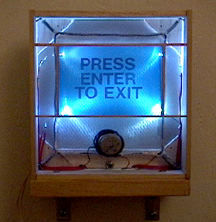 Good piece by Joe McKay:
Good piece by Joe McKay:Press Enter to ExitMcKay's work often features klutzy robotic simulations of the sleek cool computer trappings that enhance our lives, for example, his mechanical progress bar, or a recording light that "blinks" by slowly spinning on a wall-mounted rotor. Maybe in the future he can tackle the "Start" button the majority of the world's computer-users still have to press to shut down their machines. On second thought, Windows is beyond satire at this point.
There are two mesh screens inside the box, one that's shaking and one that's not. This shaking makes the letters shimmer with a moire brilliance that mimics a computer screen.
The text comes from my local deli's ATM machine. I love how messed up life is that pressing "enter" to exit makes perfect sense.
Click here for a link to a small video clip of the sculpture in action.
UPDATE: For those in the greater New York area, Progress Bar will be on display through Sunday, July 3 at vertexList, in Williamsburg. Hours are 2-6 pm today, tomorrow and Sunday. By the way, I disagree with the statement in Marcin Ramocki's exhibition thesis that "Content itself has faded to the background [in the present era] the way an adjective still describes a noun without holding much importance." It's possible to like Joe McKay's work and still enjoy something like George Romero's Land of the Dead on the level of pure story. Content is even triumphing over empty signifiers in the political realm, if Bush's poll numbers on Iraq are any indication. Go see LotD, by the way, it's a hoot. Visualize the destruction of resource-hogging yuppies by the underclass, achieve the destruction of resource-hogging yuppies by the underclass.
"Grow a Brain" [mp3 removed]
Update: Rewrote the intro. Better now, I think. Another update: a couple of minor changes to the percussion. Yet another update: more percussion tweaks and got rid of a pop at the end.
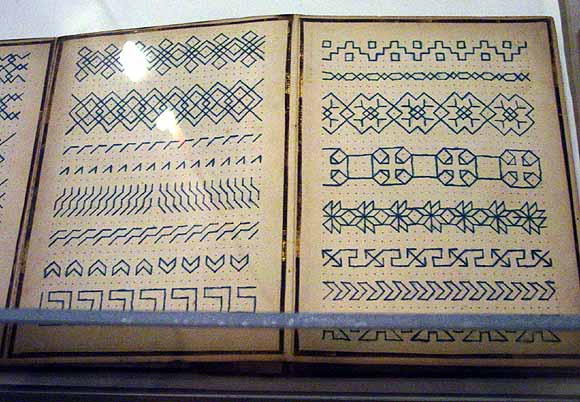
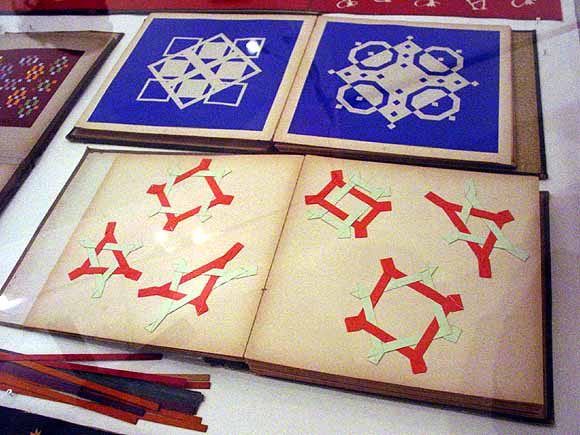
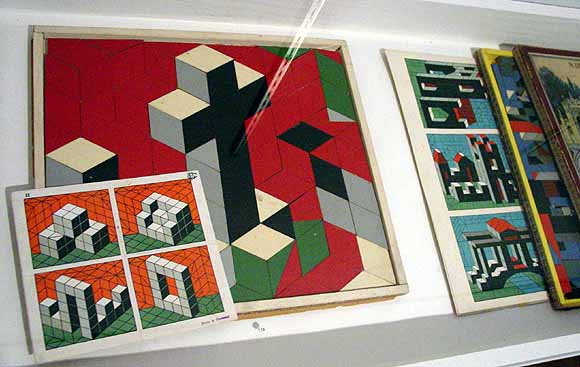
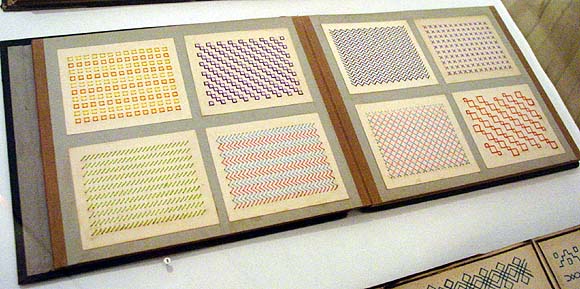
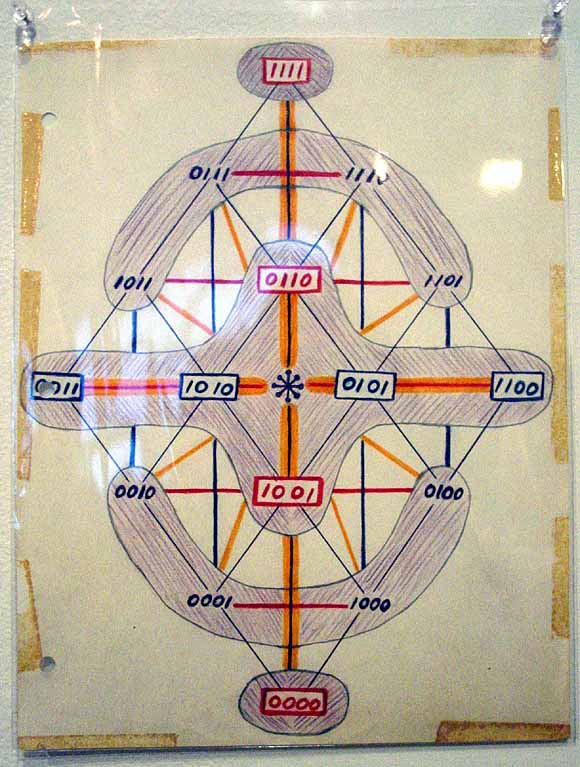
Photos from the exhibition "Philosophical Toys" at Apex Art, New York. From the web page:
The tactile, visual, and philosophical fuse in this exhibition, historically anchored in the "gifts" innovated in the 1830s by Friedrich Fröebel, the inventor of Kindergarten. The historical and contemporary works featured prove that if combined with visual and material pleasure, learning even the most abstract thought can be made into a wondrous experience—literally, child's play. Invited by apexart to invite two art dealers to select artists for the exhibition, Sina Najafi, Editor-in-Chief of Cabinet magazine, has invited the participation of private art dealers / writers Norman Brosterman (author, Inventing Kindergarten) and Christine & Margaret Wertheim (co-founders, The Institute For Figuring, Los Angeles). Mr. Brosterman has chosen works by Friedrich Fröebel, the crystallographer who invented Kindergarten, and a collection of unattributed 19th-century exercise books and parquetry puzzles. The Wertheims have selected works by Jeannine Mosely, an MIT-trained electrical engineer who is one of the world's most renowned paper folders, and Shea Zellweger, a self-taught logician who has devised a visual alphabet for revealing the geometry behind logic operations.All of the above images are the Fröebel, or Fröebel-related, material except the bottom one, which is one of Zellweger's drawings. The patterns in the first and fourth photos are made with thread pulled through holes in the paper. A flaw of the exhibition was too much ahistorical mixing of objects in the display cases. It's very poMo and all, but it would have been nice to know what you were looking at without having to puzzle it out, no pun intended. Brosterman's book on Fröebel got some attention a few years back for, among other things, overreaching in its thesis. The author proclaims Fröebel the true father of Modernism because so many early 20th Century artists and architects were exposed at young ages to the analytical and diagrammatic methods in his kindergarten curricula. No doubt the Kabbalists and makers of tantric symbols also got their interest in abstraction from attending his preschools. This exhibit should be of special interest to the Komputer Kraft Krowd (I include myself there) with its correlations to pixel art, weaving, needlepoint, mosaic tiles, obscure illuminati-like symbols, etc.
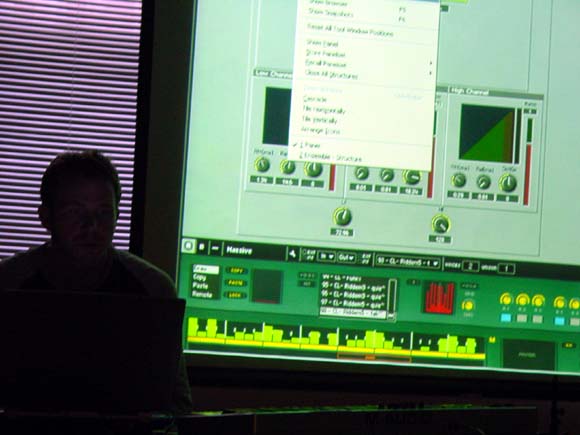
Chris List (aka CList) explains the GCD, or graphical compression/distortion unit he is working on for Reaktor 5, Native Instruments' user-designable software synth. Chris was a somewhat impromptu featured guest speaker at the Reaktor clinic at Sam Ash music in midtown, earlier today. He is one of the most prolific and ingenious of NI's "citizen designers"--i.e., people who contribute instruments to the shared user library and participate in Native Instrument forums but don't work for the company. I found out about his talk on the forum. In the photo, he is explaining how Reaktor's new "core" technology is allowing him to design a less CPU-intensive interface involving, among other things, the use of Bézier curves to plot sounds on an x-y grid. The underlying math of the GCD, applied at the core level, is way beyond me but the effect grabs the ear, and List explains it so clearly it almost sounds easy to make.
Also, thanks to Chris and the NI representative for answering my simple question about how to get samples out of Reaktor into other programs. You can save the individual .aiff files from Sampler/Properties/Sample Map Editor (located a few levels down inside the individual instrument) to a folder on your hard drive, or save the entire map and open it in Kontakt 2, which converts Reaktor sample maps. Awesome! I just converted the Limelight samples and can play around with them now outside Reaktor.
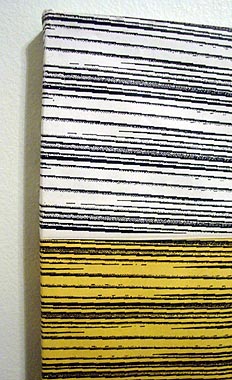
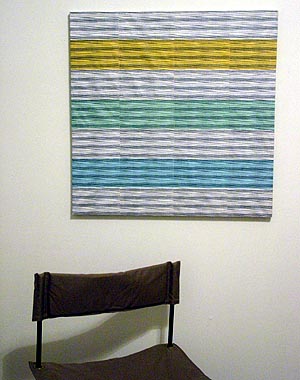
I originally posted this on February 16, 2004. It has been deleted and I am moving it here for...reasons bloggers will understand. The comments to the post have been moved to the comments to this post.
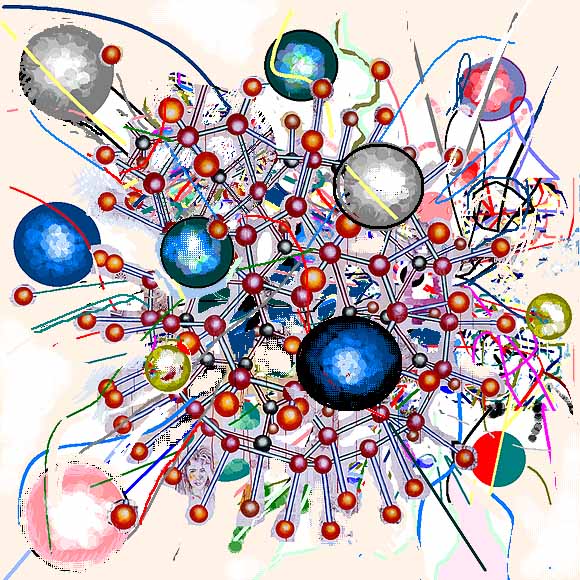
Oh--just noticed the art is for the people link, parked over on the left side of this page, has changed its content somewhat.
